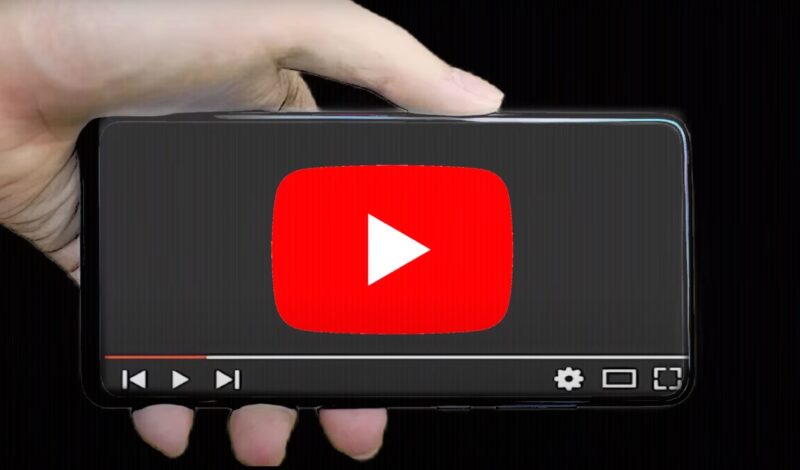YouTube pays its creators in several ways, and many wonder how much they can earn in 2024. The platform has changed a lot, making it important for creators to know about their potential earnings. YouTube offers different ways to make money, and each has its own rules and chances for income.
I will share some important insights in the following sections.
Key Takeaways
YouTube Revenue Streams for Creators

YouTube offers a variety of ways for creators to earn money, each with its unique set of rules and opportunities for income. Understanding these revenue streams is crucial for anyone looking to make the most out of their YouTube channel.
The best part is that people love watching all sorts of video. For example, you can create an interesting one about fun things to do in Bentonville, or how to prepare some delicious recipe.
AdSense Revenue
The primary way YouTube creators earn money is through AdSense revenue. This system places ads before, during, or after videos, generating income based on views and clicks. Creators receive a percentage of the ad revenue, with YouTube taking a cut for hosting and distributing the content. To maximize AdSense earnings, creators must produce content that attracts a wide audience and adheres to YouTube’s content guidelines, ensuring ads are placed on their videos.
Eligibility for AdSense requires a channel to have at least 1,000 subscribers and 4,000 watch hours over the past 12 months. Creators must also adhere to all of YouTube’s policies and guidelines. Once part of the YouTube Partner Program, creators can manage ad preferences, choosing types of ads displayed and their placement in videos.
“As far as ad revenue goes, it’s unlikely that your CPM would fall below $1.2 once your channel is this big and influential. You can expect to make up to $6 per 1,000 views. This means that your estimated earnings would be $1,200 to $6,000 for every million views on the videos you post.”
Channel Memberships
Another revenue stream comes from channel memberships. This feature allows viewers to pay a monthly subscription fee, providing them with access to exclusive perks such as badges, emojis, and special content. Channel memberships offer a steady income stream, independent of video views, making it a valuable asset for creators with a loyal fan base.
To qualify for channel memberships, a creator’s channel must have more than 30,000 subscribers. Creators must also be over 18 and in good standing with YouTube. Successful channel memberships depend on offering attractive perks and regularly engaging with members, encouraging more viewers to join.
Super Chat and Super Stickers
During live streams, creators can earn money through Super Chat and Super Stickers. These features allow viewers to pay to highlight their messages or send animated stickers, making their comments stand out. This not only generates additional revenue for the creator but also enhances viewer interaction during live streams.
Maximizing earnings from Super Chat and Super Stickers involves hosting engaging live streams that encourage viewer participation. Creators should promote upcoming live events across their social media platforms and within their YouTube content to increase viewer turnout.
By diversifying their income through these and other revenue streams, YouTube creators can build a more stable and lucrative career on the platform. Each revenue stream requires specific strategies and considerations, but together, they offer multiple paths to financial success on YouTube.
| Revenue Option | Potential Earnings |
|---|---|
| AdSense Revenue |
|
| Channel Memberships |
|
| Super Chat and Super Stickers |
|
What YouTubers Really Make?
The earnings of YouTubers can vary dramatically based on factors like channel size, audience engagement, content niche, and monetization strategies. Here, we’ll look at reported earnings from a range of channels to provide a clearer picture of potential YouTube income.
Small to Medium Channels
For channels just starting out or those with a modest following, earnings can be quite variable. A small channel with a few thousand subscribers might only make a few hundred dollars a month from AdSense, depending on their niche and audience engagement. For example, a channel with around 10,000 subscribers might average $100 to $300 per month from ads, assuming their videos consistently garner views in the thousands.
Large Channels
Larger channels with hundreds of thousands to millions of subscribers can see significantly higher earnings. For instance, a channel with a million subscribers can make anywhere from $2,000 to $40,000 a month from AdSense alone, with wide variances based on CPM rates and viewer engagement.
Top Earners

At the highest end, top YouTubers make substantial incomes. For example:
- MrBeast (Jimmy Donaldson) leads with earnings of $54 million. Known for his expensive stunts and philanthropy, MrBeast has a massive following of 206 million subscribers. His revenue streams include AdSense, sponsorships, and merchandise sales.
- Jake Paul follows with $45 million, transitioning from Vine to YouTube, where his comedic content and daily vlogs have attracted 21.5 million subscribers. His earnings come from a mix of AdSense, sponsorships, merchandise, and music streaming platforms.
- Markiplier (Mark Fischbach), famous for his “let’s play” gaming videos and comedic commentary, earns $38 million. With 35.7 million subscribers, his income sources include AdSense, sponsorships, and merchandise sales.
- Ryan Kaji of Ryan’s World reviews toys and has expanded his channel into a family enterprise, earning $32 million. His channel boasts 35.8 million subscribers, with revenue from AdSense, sponsorships, and merchandise.
- Dude Perfect, a sports entertainment group known for their trick shots and comedy videos, earns $30 million. They have 59.8 million subscribers, with income from AdSense, sponsorships, and merchandise sales.
- Jeffree Star, a beauty mogul and YouTuber, has made $25 million. With 15.8 million subscribers, his earnings are through AdSense, sponsorships, merchandise, and his cosmetic line.
- Rhett and Link of “Good Mythical Morning” also earn $25 million. Their comedic sketches and music videos have attracted 18.4 million subscribers, with revenue from AdSense, sponsorships, and merchandise sales.
- DanTDM (Daniel Middleton), a British gamer known for his Minecraft videos, earns $22 million. He has 24.2 million subscribers, with income from AdSense, sponsorships, and merchandise sales.
- PewDiePie (Felix Kjellberg), one of the platform’s earliest and most famous creators, makes $20 million. With 111 million subscribers, his revenue comes from AdSense, sponsorships, and merchandise sales.
- Like Nastya, a Russian-American YouTuber creating children’s content, earns $18 million. She has 72 million subscribers, with earnings from AdSense, sponsorships, and merchandise sales.
Factors That Affect YouTube Earnings

YouTube earnings vary widely among creators due to several key factors. Understanding these can help creators strategize to maximize their income potential on the platform.
Audience Demographics
The geographic location, age, and interests of your audience significantly influence ad rates. Advertisers pay more for certain demographics, particularly viewers from countries with higher purchasing power like the United States, Canada, the United Kingdom, and Australia. Targeting content to appeal to these demographics can enhance earnings.
Video Content Quality
High-quality, engaging content that keeps viewers watching for longer periods can lead to higher earnings. YouTube’s algorithm favors videos that perform well in viewer retention and engagement, increasing their visibility. Investing time in improving video quality, editing, and presentation can attract a larger audience and, by extension, more ad revenue.
Engagement Metrics
Likes, comments, shares, and the overall engagement rate of a video influence its reach and the amount of revenue it can generate. Engaging with your audience by responding to comments and encouraging interaction can boost these metrics. Higher engagement rates not only increase ad revenue but also improve the channel’s attractiveness to potential sponsors.
How to Maximize Your Income?
Creators on YouTube explore various strategies to enhance their channel revenue. A key approach involves diversification across multiple income streams beyond traditional ad revenue.
Diversify Income Sources
Exploration of merchandise sales, sponsorships, and affiliate marketing offers additional revenue channels. Successful creators often share stories of leveraging their brand to collaborate with companies, sell branded products, or earn commissions through product recommendations. These avenues provide a stable income, reducing reliance on ad revenue alone.
Build a Loyal Community
A dedicated subscriber base acts as the foundation for a channel’s success. Regular content uploads, consistent branding, and active engagement with viewers foster a sense of community. This loyalty not only supports direct income through views but also enhances the effectiveness of other monetization efforts like memberships and merchandise sales.
Use Analytics for Growth
YouTube provides creators with detailed analytics, offering insights into viewer preferences, behavior, and engagement patterns. Tailoring content to meet these insights helps in attracting a larger audience and improving video performance. A strategic approach to content creation, informed by data, can significantly impact a channel’s revenue potential.
Monetization Policies
Adhering to YouTube’s monetization policies ensures a smooth revenue generation process. This section outlines essential aspects of these policies and offers guidance for compliance.
YouTube Partner Program
The YouTube Partner Program (YPP) offers access to monetization features. Criteria include a minimum subscriber count and watch hours. Creators must also comply with all community guidelines and monetization policies. Familiarity with these requirements helps in achieving and maintaining eligibility for monetization.
Ad-Friendly Content
YouTube enforces strict guidelines to determine if content is suitable for ads. Creators must produce videos that align with these standards to qualify for ad revenue. Avoidance of controversial topics, adherence to copyright laws, and engagement in positive content creation practices are crucial.
Copyright Claims
Copyright claims can affect a channel’s ability to earn revenue. Creators should use original content or content licensed for commercial use to avoid claims. In cases where claims arise, understanding the process for resolution and dispute is vital for maintaining access to monetization features.
Affiliate Marketing on YouTube – How It Works?
Affiliate marketing involves a partnership between a content creator and a company. The creator promotes the company’s products or services and earns a commission for each sale or action completed through their unique affiliate link. This model benefits both parties: companies gain exposure and sales, while creators monetize their content beyond traditional advertising.
Setting Up Affiliate Partnerships
- Select Relevant Products or Services: Creators should choose to promote items that align with their content and audience interests. This relevance ensures higher engagement and conversion rates.
- Join Affiliate Programs: Many companies offer affiliate programs. Creators can join these programs through direct company websites or affiliate networks that connect publishers with brands.
- Generate and Share Affiliate Links: Once part of an affiliate program, creators receive unique links that track referrals. Sharing these links in video descriptions or pinned comments is a common practice.
Best Practices for Success
- Transparent Disclosure: YouTube and regulatory bodies require creators to disclose affiliate relationships to their audience. Clear communication about the use of affiliate links builds trust with viewers.
- Content Integration: Successful creators integrate product promotions naturally within their content. This integration can include product reviews, tutorials, or mentions within broader topic discussions.
- Engagement and Call to Action: Encouraging viewers to click on affiliate links through calls to action can significantly increase conversion rates. Engaging content that highlights the benefits of the promoted product or service is key.
Potential Earnings
Earnings from affiliate marketing vary based on the product’s price, the commission rate, and the creator’s ability to drive sales. Some creators earn a few dollars per month, while others generate thousands, showcasing the scalability of affiliate marketing on YouTube.
FAQs
What is the average YouTuber salary?
The average annual pay for a YouTube channel in the United States is $68,714.
What happens when a YouTuber hits 100K?
When a YouTuber reaches 100,000 subscribers, they often receive a Silver Play Button award from YouTube to celebrate their achievement.
How does TikTok pay?
TikTok pays creators through its Creator Fund, which distributes money based on video views and engagement. The exact payment varies depending on factors like audience size and content quality.
Which platform pays the most?
YouTube tends to pay the most to content creators, especially those with large audiences and successful monetization strategies.
Last Words
YouTube offers creators multiple ways to earn, highlighting the importance of diversification and understanding platform-specific monetization strategies. Success on YouTube isn’t just about creating content; it’s about effectively leveraging different income streams, from ads to affiliate marketing.
As creators continue to navigate these opportunities, the potential for financial growth remains significant. The journey to maximizing YouTube revenue requires adaptability, strategic planning, and a deep connection with one’s audience.
